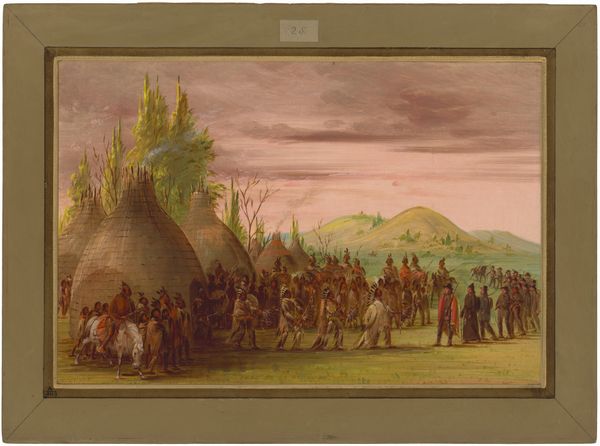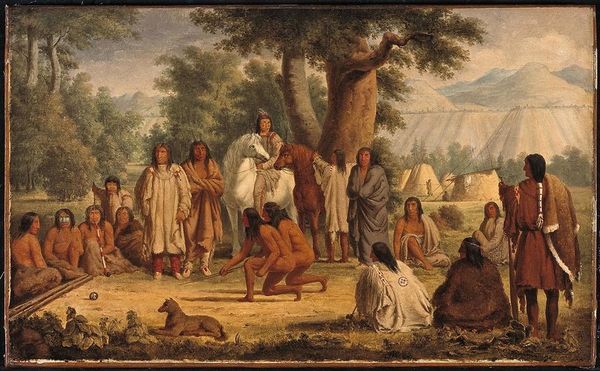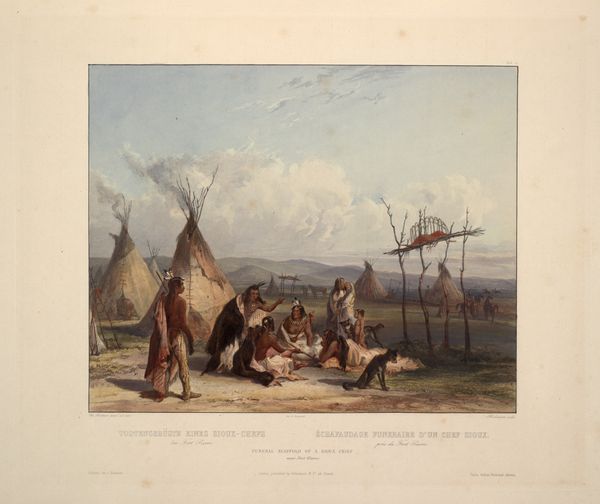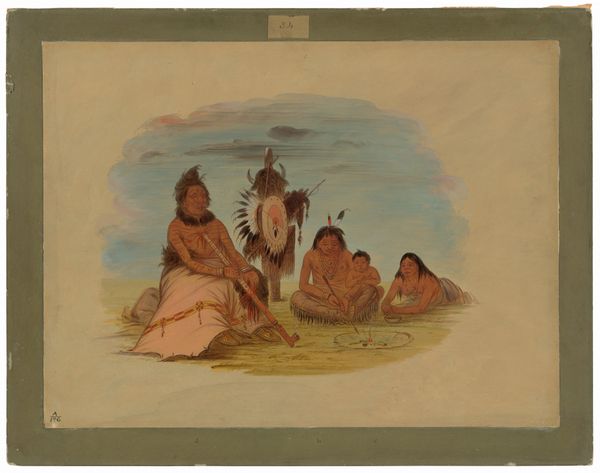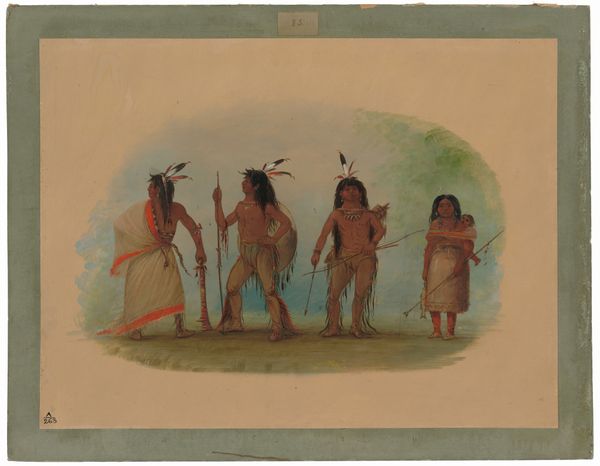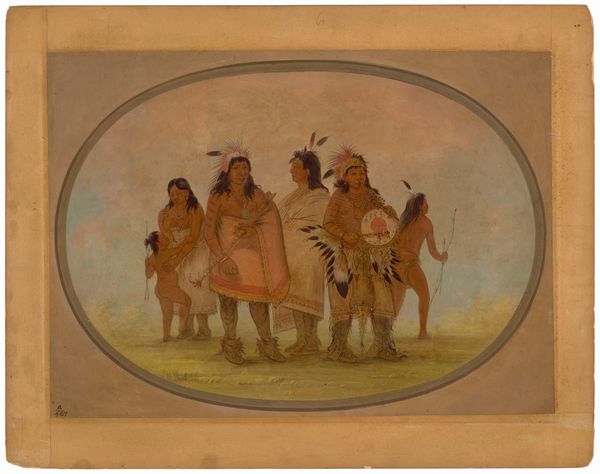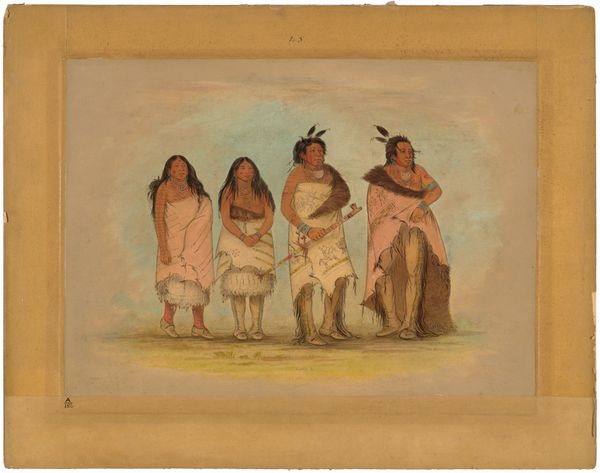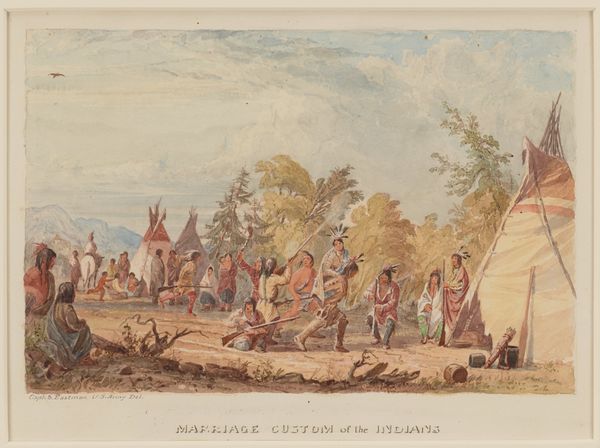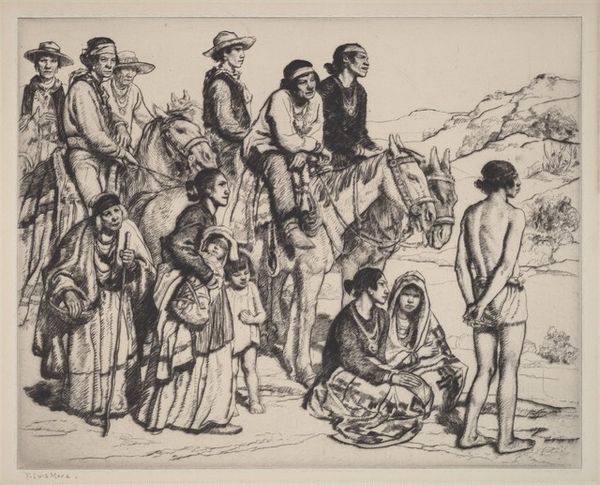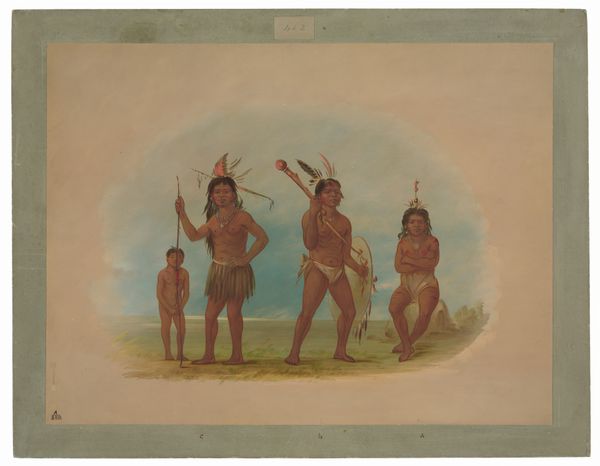
painting, oil-paint
#
gouache
#
narrative-art
#
painting
#
oil-paint
#
landscape
#
oil painting
#
underpainting
#
romanticism
#
painting painterly
Copyright: Public domain
Editor: This is Paul Kane’s “Medicine Pipe Stem Dance,” painted in 1848 using oil paint. It's a captivating scene, and there's something about the muted tones that creates a solemn mood. What stands out to you in this work? Curator: Well, the painting presents an idealized, romanticized vision of Indigenous life during a period of immense change and disruption. Kane documented what he saw on his travels, but his artistic choices were always shaped by prevailing attitudes of the time and, of course, by the market. Editor: Can you elaborate? Curator: Absolutely. Consider the "authenticity" being presented here. Kane, like many artists of his era, played a role in constructing an image of the "noble savage" for a European audience, conveniently ignoring or downplaying the impact of colonialism, disease, and displacement that were actively transforming Indigenous societies. Does it strike you as problematic to be viewing such imagery? Editor: It does, actually. So, you’re suggesting that paintings like this one weren't simply objective records of events? Curator: Precisely. They were products of a specific cultural and political context. These paintings can tell us as much about the culture of the colonizers and their perceptions of the "other" as about the Indigenous peoples themselves. It’s important to consider who this image was created for, and the narrative it served to reinforce. Editor: That definitely changes how I see the artwork. I’m now thinking about the artist’s choices and how they might distort the truth. Curator: Precisely. Remember that the power to represent a culture holds significant sway and impacts our historical understanding of it. Editor: I’ll definitely keep that in mind moving forward. This was incredibly insightful.
Comments
No comments
Be the first to comment and join the conversation on the ultimate creative platform.
